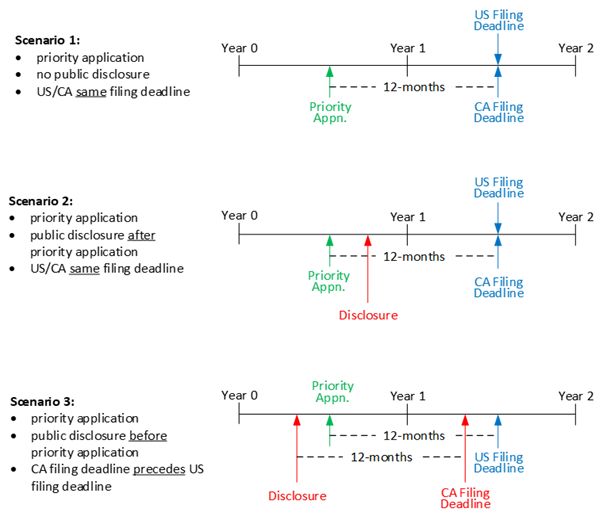Patent applicants need to be aware of a subtle, but key difference between Canada and other jurisdictions like the United States when relying on the grace-period for inventor disclosures.
For an invention to be patentable, it must be new, useful, and non-obvious. To be new, the invention generally must not be publicly known at the time the patent application is filed, which includes not having been publicly disclosed by the inventor. However, certain jurisdictions, such as Canada and the United States, have a one-year grace period to file a patent application if an inventor discloses their invention.
The grace period typically allows an inventor to publicly disclose their invention, for example by selling their invention, and not be barred from patenting their invention for one-year after the disclosure. However, there is one key difference between the Canadian and United States grace periods when claiming priority in a patent application.
Both Canada and the United States allow an applicant to file a patent application and claim priority to a previously filed application. Claiming priority is a critical feature of patent law for various reasons, including that for the purpose of novelty, a patent application is new in view of a public disclosure, if the patent application claims priority to another application predating the public disclosure. In this manner, claiming priority can be used by applicants to establish novelty of their patent applications, including in view of their own public disclosures.
In the United States, a patent application is considered to be new in view of an inventor's disclosure, if the application is filed within one-year of the inventor's disclosure, or claims priority to an application that was filed within one-year of the inventor's disclosure.1 However, in Canada, a patent application is considered to be new in view of the inventor's disclosure only if the Canadian application is filed within one-year of the inventor's disclosure.2 A Canadian patent application cannot rely on a priority claim to fall within the one-year grace period. As such, if an inventor disclosure has been made anywhere in the world, a Canadian patent application must be filed within one-year of the inventor's disclosure, regardless of any priority application having been filed.
The following graphic summarizes the difference between the Canadian and United States filing deadlines when an inventor disclosure has occurred before a priority application was filed:

Given the similarities between Canadian and United States patent practice, many patent practitioners are often caught unaware by the shorter filling deadline in Canada than in the United States. Any applicant looking to rely on the Canadian grace period for inventor disclosures should consult with a Canadian practitioner to confirm what filing deadline may apply.
Footnotes
1. 35 U.S. Code § 102 – Conditions for patentability; novelty
2. Patent Act, RSC 1985, c P-4, Section 28.2 (1) Subject-matter of claim must not be previously disclosed
The foregoing provides only an overview and does not constitute legal advice. Readers are cautioned against making any decisions based on this material alone. Rather, specific legal advice should be obtained.
© McMillan LLP 2024

